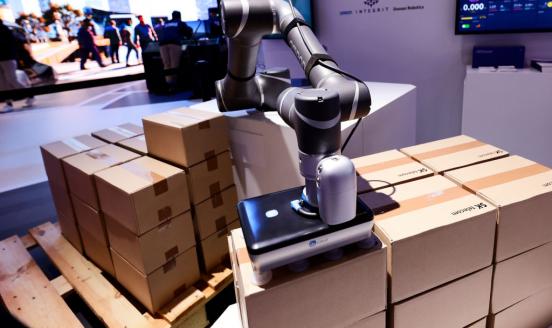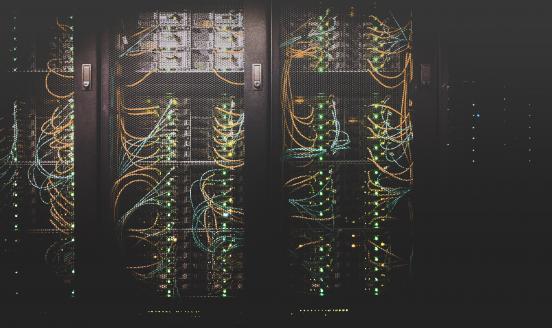The growing presence of robots in EU industries
While it is always tempting to try to predict future patterns in the automation of European industries, it is also insightful to assess key dimensions

The author is grateful to Nicolas Moës for its research assistance.
When it comes to artificial intelligence (AI) technologies, the mass arrival of intelligent and efficient robots and their impact on labour (see Petropoulos, 2017) and production has been frequently discussed and debated. While it is always tempting to try to predict future patterns in the automation of European industries, it is also insightful to assess key dimensions of their robotisation so far, starting from the pre-AI era. This article presents evidence on the use of industrial robots by European industries from 1993 and onwards.
An industrial robot is defined as “an automatically controlled, reprogrammable, multipurpose manipulator programmable in three or more axes, which can be either fixed in place or mobile for use in industrial automation applications” (International Federation of Robotics, 2016). Following this definition, a classification test would have required a positive answer to the following three questions:
- Does it have multiple purposes?
- Can it be reprogrammed to perform another task?
- Can it perform its tasks without requiring human control?
While neither our coffee machine nor the elevator at our home building pass this classification test, fully autonomous machines that do not need a human operator and can be programmed to perform several manual tasks – such as welding, painting, assembling, handling materials, or packaging – are classified as industrial robots. The same applies for a robot used in car production that satisfies these criteria.
The number of industrial robots used in global production is increasing with a significant upward trend, as illustrated by the statistics collected by the International Federation of Robotics (IFR):
More than 1 million robots are located in the Asian markets (including China), with China having 33.7% of them. Moreover, the annual growth rate in the number of industrial robots is particularly high in China, to the extent that it is expected to surpass that of the EU28 by the end of 2017. The robotisation of the Chinese industries had a peak in the previous decade, with a mass introduction of robots in production. That was not the case for the EU, US and Japan, where the robotisation started much earlier and evolved in a much smoother way.
In 2017 robot installations are estimated to increase by 21% in the Asia-Australia region. Robot supplies in the Americas will surge by 16% and in Europe by 8%.
Controlling for the working population in each region, and using as our measure the density of robots (i.e. the number of industrial robots per thousand workers) we observe that EU28 is the first in the use of robots in industrial production, with 1.9 robots per thousand workers in 2016:
The prevalence within the EU28 can be attributed to the region’s strong automobile branch, where more than 170,000 robots take part in the production process:
Nevertheless, when we take into account the recent trends, we observe that the intensity of robotisation has been shifting beyond automobile, in sectors that are less “mature” in being automated – such as mining and quarrying, other manufacturing branches and electricity supply:
Looking at the use of industrial robots across European countries, countries with a strong automobile presence – for example, Germany, Italy and Sweden – are the champions:
But, interestingly, it is Romania, Lithuania and Slovakia, along with Estonia and Portugal, that exhibited the highest growth in 2016 in the use of industrial robots, suggesting their willigness to move towards more efficient production lines even if they do not have a significant precense in the production of automobiles:
Looking ahead, the density of robots is expected to rise. Industry 4.0 is going to play an increasingly important role in global manufacturing. With the removal of obstacles like system complexities and data incompatibility, manufacturers could potentially integrate robots into their networks of machines and systems, expanding the robot usage and their corresponding density. Moreover, with a rapidly growing market for cloud robotics, data from one robot can be compared to data from other robots in the same or different locations (see IFR press release). This, combined with the advancement of AI algorithmic systems and machine (deep) learning techniques will allow the optimisation of parameters of the robots’ functions, making them more competent and efficient.



